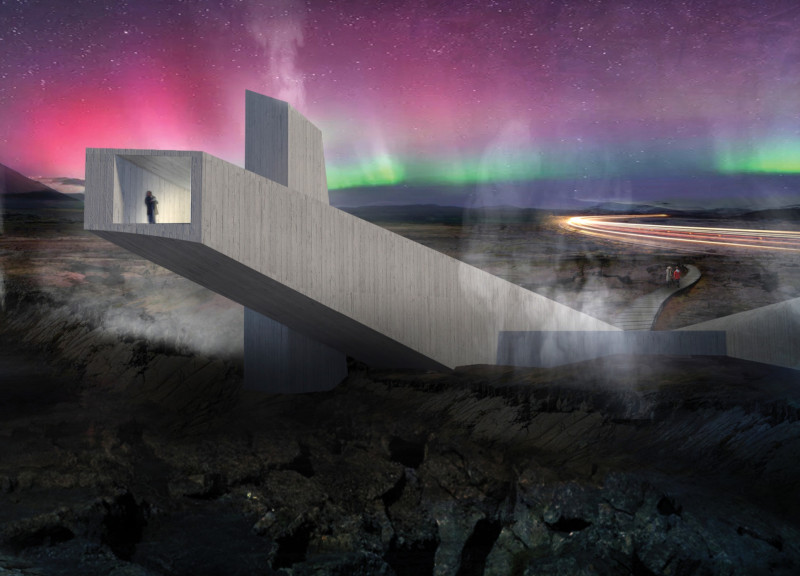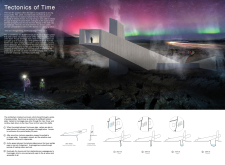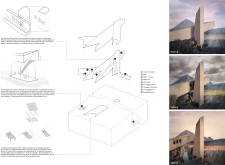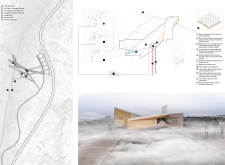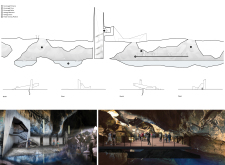5 key facts about this project
Tectonics of Time is an exploration of how geological processes shape landscapes and influence human interactions. Located in Iceland, where the North American and Eurasian tectonic plates meet, the design facilitates visitor access to the Kvennagjá cave. The two towers are the project's centerpiece, each resting on a different tectonic plate. This setup creates a clear connection between the natural forces of the Earth and the architectural intervention.
Design Concept
The concept focuses on a unique visitor experience that changes over time. Access to Kvennagjá cave is dependent on the alignment of access portals connected to the movement of the tectonic plates. Visitors can traverse between the two towers and enter the cave for about 25 years. After this time, tectonic changes will misalign the portals, closing access to the cave. This allows the cave's fragile ecosystem to recover while highlighting the relationship between natural forces and human exploration.
Materiality
Concrete constitutes the main material used in the construction of the towers. This choice reflects the need for a material that can withstand Iceland's demanding weather and geological conditions. Concrete’s durability ensures that the structures will remain intact as the landscape shifts. While the project specifies concrete, it does not detail other materials, signaling a focus on a robust and long-lasting presence in a constantly changing environment.
Sustainability Features
Sustainability is an essential aspect of the design. Water is harvested from rain and snow, providing a renewable source for the site's needs. Additionally, a small steam-powered generator runs on bio-fuels, converting geothermally heated water into steam. This steam meets the energy requirements of facilities such as the visitor center and a café. Efficient water management practices ensure fresh water is available while recycling grey water for toilets, addressing ecological concerns associated with visitor use.
Visitor Experience
A boardwalk path directs visitors to the Karlagjá cave, enhancing access while preserving the delicate cave ecosystem. Elevated above the surrounding terrain, the boardwalk establishes boundaries that help protect the sensitive environment. Viewing platforms are strategically located to offer glimpses of the dramatic landscape. These elements invite visitors to appreciate the geological forces that have shaped the area, creating a thoughtful relationship between the built environment and the natural world.
Tectonics of Time embodies a design that respects both the geological landscape and the needs of visitors. With its practical facilities and thoughtful layout, it serves as a testament to ongoing interactions between nature and architecture.


